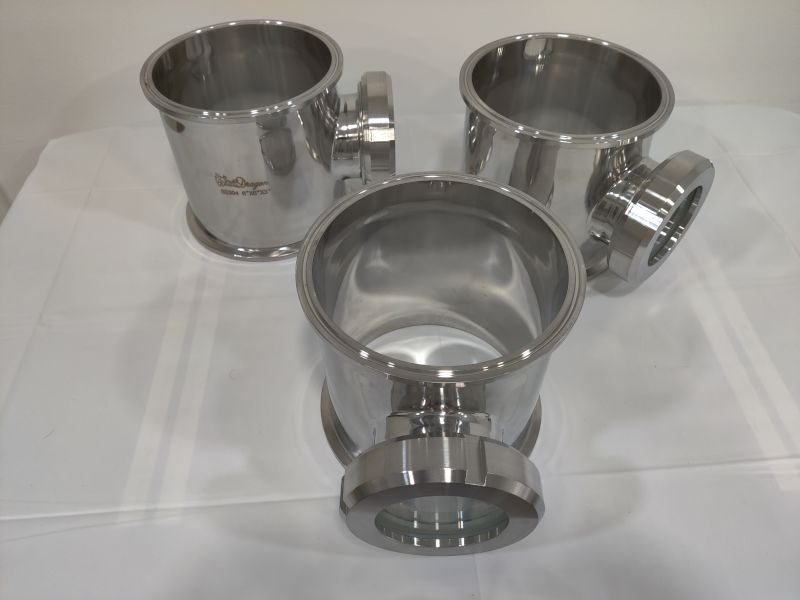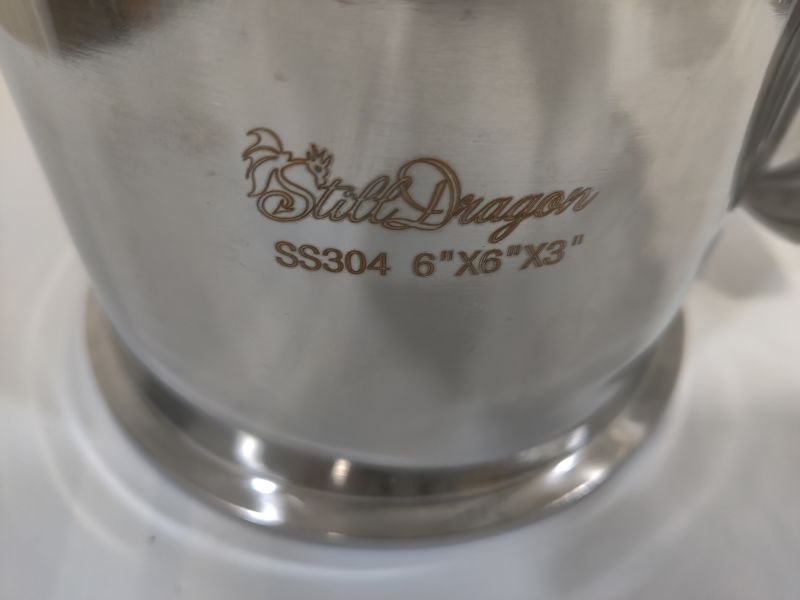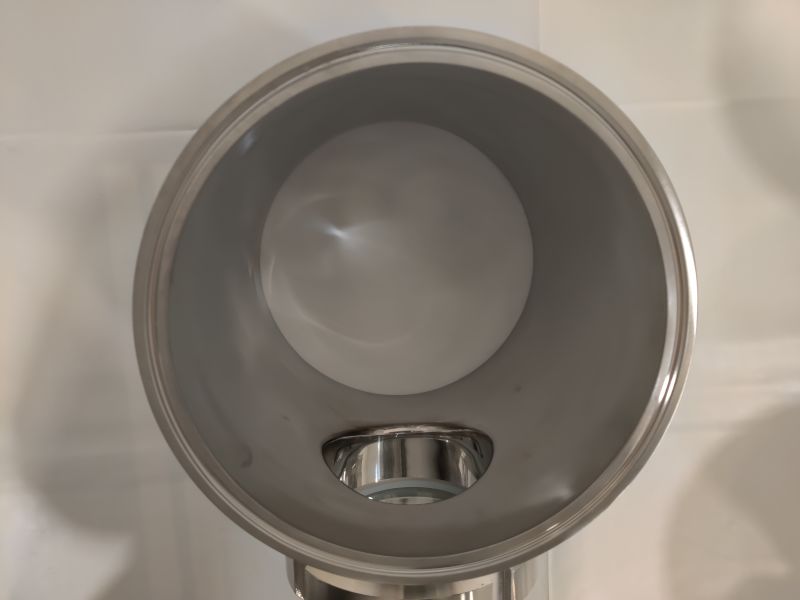-
Fats in the Pool?
This is what happens to me when i have too many brownies.
I've made this, and mulled wine and plenty more from this era.
Take eight Gallons of Ale; take a Cock and boil him well; then take four pounds of Raisins of the Sun well stoned, two or three Nutmegs, three or four flakes of Mace, half a pound of Dates; beat these all in a Mortar, and put to them two quarts of the best Sack; and when the Ale hath done working, put these in, and stop it close six or seven days, and then bottle it, and a month after you may drink it.
Not the nitrate one below though.
‘A Provocative Drink’: Making a Rooster-Infused Early Modern Ale @ braciatrix
Fats in the Pool?Probably aimed mostly @grim.
Is there any evidence to suggest that having fats in the kettle (in this instance a petchuga styled chicken in the vapor path or in the kettle charge) would have a reactive relationship with heads constituents in such a way that it would sequester perceived heads?
Here is the dude's assertion:
About serious cabbage soup.
My colleague carried out a laboratory analysis of a simple distilled sugar mash with a meat composition and vegetable oil IN ONE TIME WITHOUT SELECTING THE FIRST DROPS.
- Aldehydes 68.1 mg/dm3 (norm – 10-350)
- Ketones (acetone) 0.5 mg/dm3 (norm – 0.1-2.34)
- Esters 337.5 mg/dm3 (norm - 10/50 -1500)
- Methanol 0.0005% vol. (norm – 0.05)
- Higher alcohols (fusel oils - 1658.6 mg/dm3 (norm - 500-4000/6000)
THINK: IN ONE TIME WITHOUT SELECTING THE FIRST DROPS! These are impressive results that are better than the results of double or triple distillation.
The colleague promised to continue to conduct comparative analyzes on oil seeds and meat products. There is a suspicion that the distillate is purified not only by fats, but also by proteins. He must find out.
Stripping Run --> Spirit run: How to minimise wastage?A short packed section with some structured copper mesh is what most of the hobby guys here use on top. I do a 4" x 510mm with mesh screen, clamp and gasket and i sell a heap of them.
Stripping Run --> Spirit run: How to minimise wastage?@BorisTheMidget said: thanks everyone for your responses!
punkin - can i ask for a little more info on this one? When i spoke with the manufacture, they we indicating that 4 plates would be enough for a high quality vodka. To help me learn (i am not trying to be rude), do you believe this is not the case, and could i ask why?
Ok firstly, have a look at anyone making a premium vodka. 16ish to 30 plates would be the tool they use. 30 being the theoretical max. Anyone making vodka with a 4 plate column is just not really making vodka or having success marketing a premium vodka spirit unless they are at least charcoal filtering.
Also consider that less plates than that can certainly render high proof. Lets take a 10 plate column for example (or perhaps even less). If you are able to achieve 95% abv with 10 plates it will not be as "clean" as the same 95% driven through 16 plates or more. Why? Because you will need to run at a higher reflux ratio with the shorter column to maintain proof. The higher reflux ratio means that you will be dragging up "extra" flavor congeners. Particularly with the 4 plate column. Higher plate count with lower reflux ratio is the best way to render the cleanest spirit possible.
The 4 plate column does not at all have the ability to make a proper modern vodka. It is a tool that does much better making flavored spirits like rum , whiskey and brandies.
Now,,you can certainly do multiple runs to clean the spirit up to the extent possible. But in doing so you will loose product and spend additional resources with respect to labor hours and utilities. Now your "basic" vodka costs more to produce than a more desirable whiskey. This is why so many folks source NGS for their vodka. The least desirable spirit costs the most to make. In other words, you can very frequently buy NGS cheaper than it costs to make it unless your distillery is outfitted correctly.
The equipment will never cost more than the labor to operate the equipment over the service life of the equipment. If you want to make a premium vodka, buy a dedicated vodka still.
Use the short plated column for your flagship flavored spirits and put together a smaller dedicated vodka still. It will likely be less expensive than putting together one of those "jack of all trades , master of none" type stills.
Punkin will likely be along to fill in the gaps.
EDIT: Ah wait. Are you a hobbyist? If so the production cost concerns don't have the same priority. You can make "vodka" on any still.
4" To 6" Upgrade@SLOPEmeisteR said: grim crozdog thanks for your input. I'm a bit happier now knowing 380lt boiler with 8" Dash Pro can run spirit with 15kW, giving me loads of capacity... for now. Simple dimensions check, if you can help. What's the floor to superstructure opening height on the 380lt boiler? I've got the column (standard 3 plate config) at 1160mm and extra sections at 203mm from the web shop, so can work out what fits!
The single wall is right around 1100 + or - mm tall at the column connection.
The Electric Jacketed version is roughly 1219 mm + or - at the column connection. The conventional steam kettle should be just about the same as the Electric Jacket.
4" To 6" Upgrade@grim @crozdog thanks for your input. I'm a bit happier now knowing 380lt boiler with 8" Dash Pro can run spirit with 15kW, giving me loads of capacity... for now. Simple dimensions check, if you can help. What's the floor to superstructure opening height on the 380lt boiler? I've got the column (standard 3 plate config) at 1160mm and extra sections at 203mm from the web shop, so can work out what fits!
Stripping Run --> Spirit run: How to minimise wastage?What @crozdog said. I used one still for a long time and I would do three strips and then a spirit run. Remember on the spirit run to dilute your spirit down. So if you make 3 strips at 15l each you will have 45l of low wines. You should dilute that down with another 40 or 50 l of water and then do your spirit run.
4" To 6" UpgradeHi @punkin - I hear you on volume/work load! Can always charge less than 380lt, but mostly it'll be a full charge to maximise the capacity and volume output. Maybe smaller charge for trial runs, but I've got the 100lt/4" for that anyway.
Hi @crozdog - I'd prefer to go 8" if I think the powers enough, commercially it makes sense.
Heat up time is what it is really, max power available, how long will it take. We all work with that.
The only metric I have to select the column diameter is vapour speed.
Looked again at my existing 100lt/4"Dash (3 pro-cap plates), vapour speed is actually 16.03 on the run at 4.4kW. Your running 380lt/8", vapour speed is 12.75 on the run at 14kW.
I could do 380lt/8", vapour speed at 13.66 on the run at 15kW (leaving 5kW for the house load; max 20kW incoming main).
I do run my 4" quite hard then at 16.03 vapour speed, I use a good bit of reflux on this to maintain product flow. With 8" running at 15kW the heat to cooling ratio would be changed i.e. less reflux cooling at this lower vapour speed to maintain product flow. Is that the right thinking?
Really my big concern about going up to 8" was will I be able to power a decent enough flow rate, sound like I can albeit with a lower vapour speed than I'm used to on the 4".
Also 100lt to 380lt is almost quadruple, 4" to 8" is quadruple area. Roughly speaking then my heat-up/run time will be around the same for the same wash.
When I say sugar wash I mean molasses, demerara and granulated sugar blend, so there are some interesting things in the heads/tails and I do want to barrel age. Currently ageing on Still Dragon supplied oak woods, done one whisky cask aged for 8 months and it was outrageously good and sold out fast!
Stripping Run --> Spirit run: How to minimise wastage?What @crozdog says - doesn't pay to do a strip and spirit run at 1:1.
4 strips to 1 spirit. Ferment and strip 3 more batches.
Remove the plates, reflux condenser, and gin basket when you strip, they are just slowing you down.
Stripping Run --> Spirit run: How to minimise wastage?If you're running a reflux column, you don't need to do a stripping run first. You can do it in a single pass.
If you can let us know more about the wash, your rig and what you're trying to achieve, It'll help you get better answers.
yeah 12l in a 100l still isn't enough. If you're keen on doing strips before spirit runs (typically done when running a pot still) you can save and combine several strips of the same wash to get the required volume for a spirit run to ensure that not only do you cover the elements at the start, but importantly at the end of the run they are still covered.
Stripping Run --> Spirit run: How to minimise wastage?Hey Folks,
I have ~80L of wash for a 100L still, which is now at the point it's ready to go through a stripping run. Using a wash calculator, it looks like we'll end up with about 15L of spirit post stripping run. This is my first time, so i'm guessing as i've got the reflux column running, we'll be able to collect (after foreshots / heads / tails) around 12L of usable spirit for spirit run.
Question is, given that i've got a 100L still with about 12L for the spirit run, what should i add back into the collection so i can re-run it through the still? i'm worried that if i pop that 12L in, its not enough to cover the element at the bottom and i'll bugger the heating element. From memory, i think it needs about 5 or 10L at the bottom of the still to cover the element.
thanks!!
4" To 6" Upgrade@SLOPEmeisteR Have a look at the calcs page
I used it to calculate your heat up time for 380l with 15000W & got an answer of around 2.5 hours to get a 10% wash to 90C @ 90% efficiency.
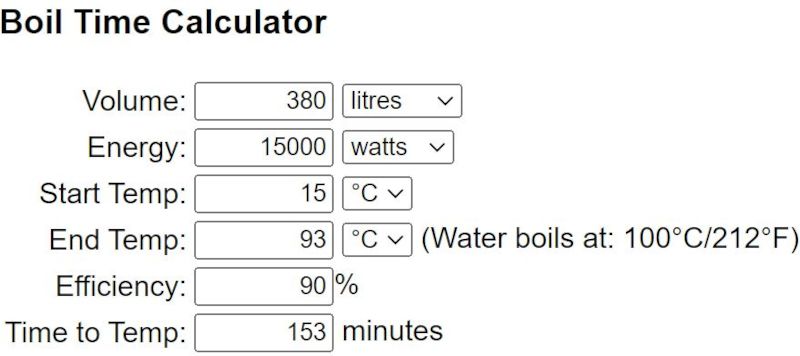
That page also has a vapour speed calculator ;-)
IMO the 380l is a perfect match with 8" columns. Remember diameter = speed. As a commercial operation, time = money. Smaller diameter = Longer runs = increased cost and lower production volumes :-(
I don't know why you say you can't get the power to run an 8". I have a 380l with 4 x 8" plates & use 21kw for heat up but cut back to 14kw for the run.
Good cuts come down to how you run the rig (eg power input, reflux ratio, timing, if you do a strip then spirit run etc). If you're going to be barrel aging you don't need the hearts cut to be as tight because you actually want a bunch of the congeners in heads (& late tails with rum) for flavour (but you won't get much of that on a sugar wash).
FYI, adding a few more plates will only take a little extra time to heat up. The longest time is getting the wash up to temp, getting the column to temp is pretty quick once the wash is boiling.
As you're operating in a pretty cold environment, don't forget you can insulate the boiler & column to improve thermal efficiency & hence overall performance of the rig.
4" To 6" UpgradeHi @grim,
Yeah I've got space and power limits to work within. I've converted my garage at home to a nano-brewery/distillery, fully HMRC licenced and selling product online and markets. I'm amazed at the quality (as are customers) I'm producing rum at on single pass through 3 plate 4" Dash, wow!
I put 12 kW solar on the roof last year, but that's only good for 8 months of the year, so working with limitation of single phase mains. The mains will do around 20 kW but I need to leave some for the wife to run the house! I recon 15 kW is a safe limit for the brewery/distillery.
This upgrade gets production capacity on rum alone into significant figures, with literally no overheads (no rent, rates, etc). As I approach capacity on the upgrade kit the business will be well placed to go for a much larger upgrade, commercial premises, and have the books to raise capital for investment. It's a plan to grow with as low a risk as possible.
Hence a bigger boiler at 380L than perhaps a 6" column requires, but I can't get the power for 8" and a 380L charge on 6" column will give a nice long run with long clear cuts I think. 380L boiler will never go a miss in a craft distillery. In the sunnier months (in Scotland, don't laugh!), I'll have up to 32 kW to play with depending on house load scheduling, this would let me run the upgrade still and my existing 100L 4" Dash... thinking maybe stripping runs on the 6" then run smaller still as a rectifier to produce vodka (might need to go 4 or 5 plates each on 4" and 6" to hit vodka).
4" To 6" UpgradeCurrent 100L boiler has 5 kW heating and takes around 2 hours to heat up my 4" Dash with 3 ProCap plates. Then around 4.5 hours at 4.4 kW with dephlegmator on pretty strong (cold Scottish water) I get a good steady flow through my cuts taking rum hearts around 81% from a 9.5% sugar wash. So I'm running with vapour speed around 15.9"/sec, right? I figure I want to replicate this as I scale up.
Thinking going with a 380L boiler with around 15 kW heating, this should take around 3 hours to heat up. I'm thinking a 6" Dash with 3 ProCap plates would take around 9.8 kW to run double flow rate through the cuts with the same vapour speed as my old rig at 15.9"/sec, right? But since the boiler volume is nearly 4 times bigger the time from heat up to end of tails will now be double the old rig, around 8 to 10 hours. Is my thinking right?
If I want to run more plates, say 6 or 8, would the total 15 kW give me enough headroom on power to push up the extra plates and maintain the product flow rate?
How many plates would I need on the new rig to make vodka, would 8 be enough and would the headroom of 15 kW of power be enough to push this through the plates with a reasonable product flow rate?
Plates and power, the balance of life!
I Love Obfuscation ProofingIf you ever hear me say that you know I've been kidnapped. I was doing Limoncello today. Just about done and the sugar does its normal thing. Now I have to clean up this disaster. Luckily I found that if I let it soak in PBW for a day or two it's not that hard to clean. It's still a huge mess though.
In the photo everything you see that is black solidified almost instantly. It smells horrible to boot. Yay me.
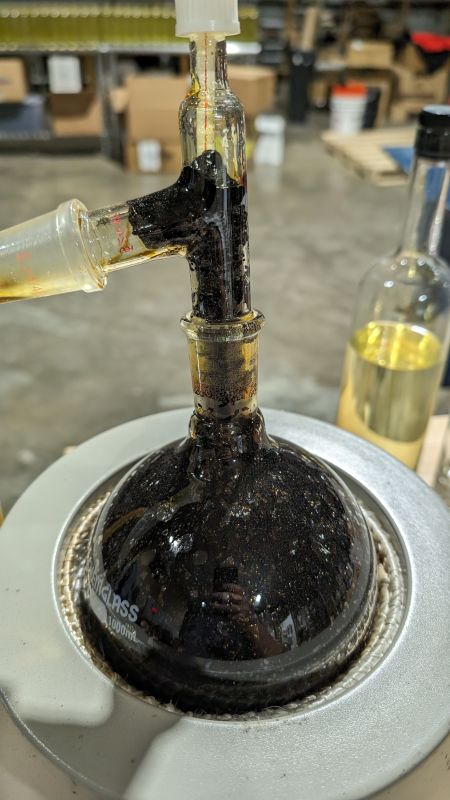 Rotovap
RotovapMuch of the motivation here was being able to use vermouth or some other oddball mixers we can't produce ourselves, in our tasting room, which isn't permitted here.
Some may look at de-alc'ing Antica as heresy, but it 100% works.
Rotovap@grim said: Did a few bottles of bourbon for "dry January" for friends. Not necessarily zero alc, as you need to distill off a 'heads' fraction first, and add that back in after removing the bulk of the ethanol.
The time I tried this, the de-alc remainder was very cloudy. How did you turn that into something that looked remotely clear like bourbon? Were the heads enough to clear it up a little? Adding water to bring back to volume didn't help.
@grim said: You absolutely can not do this at atmospheric, the higher temperature will absolutely destroy numerous flavor compounds, you need to do this under deep vacuum at very low temperatures, and have a chiller that can support the temp ranges you need (we run around -10c or -20c depending on the time of year).
That's probably an argument for keeping bottles out of the sunlight too.
RotovapAdding "heads" back in to make the finished de-alcoholized product is absolutely critical for the aromatics and lighter flavors, otherwise the finished product is flat/bland. This product absolutely needs to be kept very cold, and is not stable for more than a few weeks. The esters will disassociate back into acids as the reduced alcohol content throws off the equilibrium.
Have played around with concentrating the flavor of bourbon as well with this. Where we take a bottle, extract the heads portion, and then remove all the water and alcohol to form a thicker concentrate, and add both of these back to an unaltered bottle (less a little volume).
It's interesting, but more isn't always better, lots of these were bitter oak bombs. It's kind of like breaking off a piece of the "sap" off a leaky large barrel and tasting it.
I've never tried fractionally distilling an entire bottle. Breaking vacuum with every fraction is very time intensive, would probably take me half a day of babysitting to break 750ml into 15 50ml fractions. I know they make a 'cow' for the Buchi, but I've never seen one come up for sale on eBay.
RotovapWe de-alc finished spirits and wines with the rotovap all the time.
Did a few bottles of bourbon for "dry January" for friends. Not necessarily zero alc, as you need to distill off a 'heads' fraction first, and add that back in after removing the bulk of the ethanol.
You absolutely can not do this at atmospheric, the higher temperature will absolutely destroy numerous flavor compounds, you need to do this under deep vacuum at very low temperatures, and have a chiller that can support the temp ranges you need (we run around -10c or -20c depending on the time of year).
When doing these kinds of temp sensitive evaporations, we run the water bath at a few degrees over ambient so we have some way to control heat input.
[USA/WA] Sale: 3 Pieces 6" x 6" x 3" Stainless Steel Sight Glass Union TeeHello,
I am selling (3) of StillDragon 6" x 6" x 3" Stainless Steel Sight Glass Union Tee. They came to me through some wine stainless steel stuff sale as not used. They were kept in indoor storage for about 5 years until I found it a week ago now they are on sale.
Each unit comes with glass "windows" - you get what you see on pictures. Nothing else is there.
They are sold at StillDragon for $245 each.
They are yours for $400 total for all (3) plus reasonable shipping cost.
